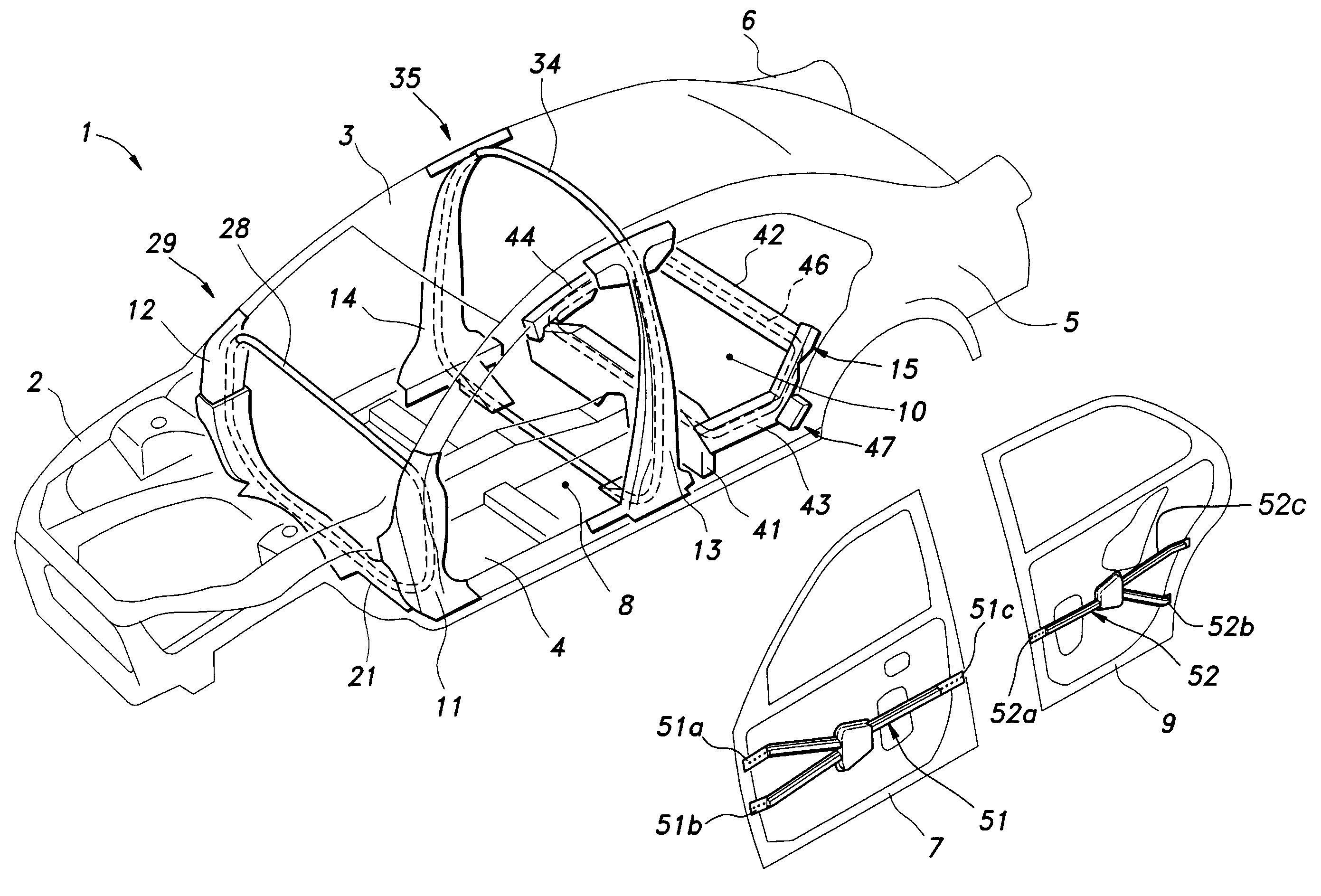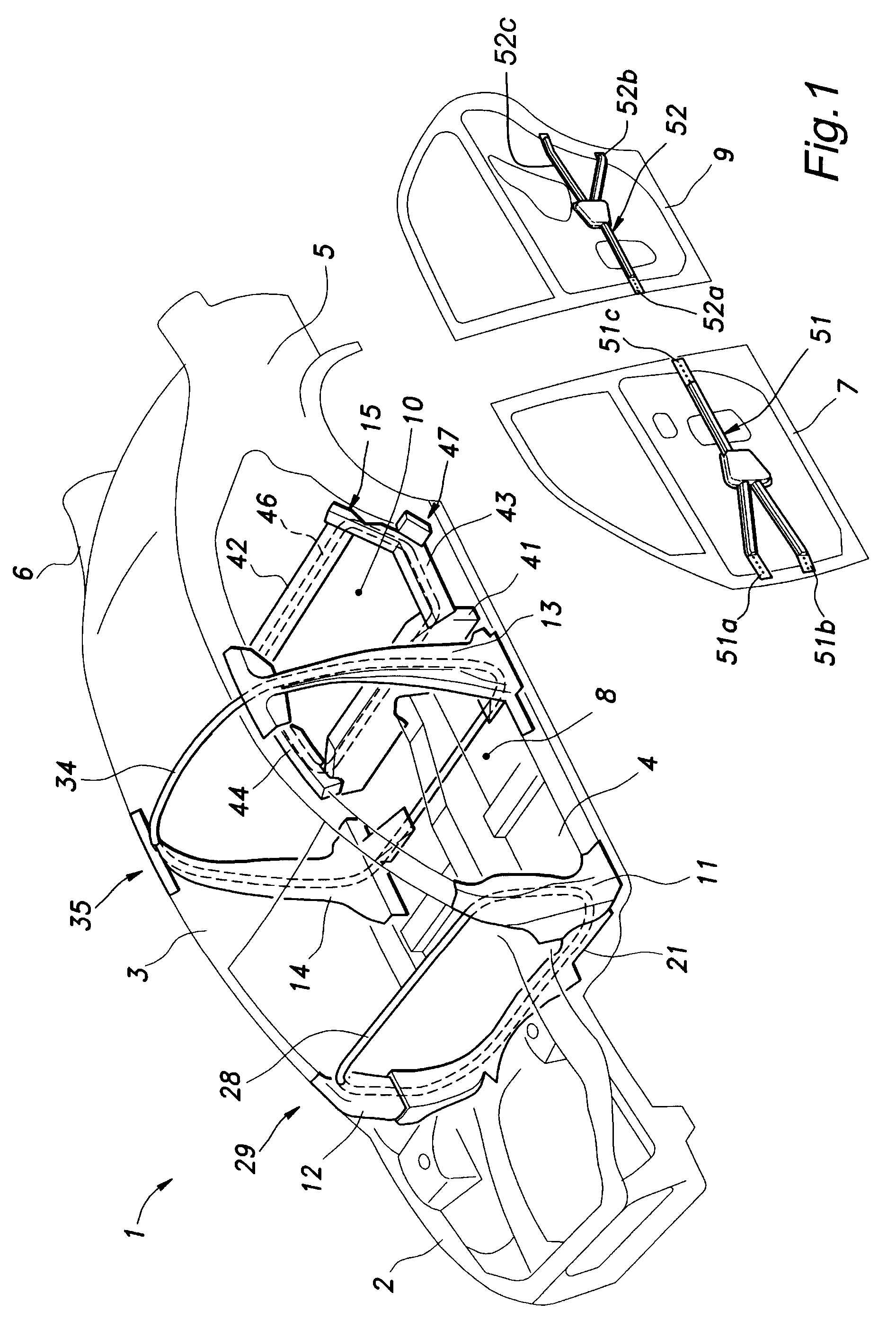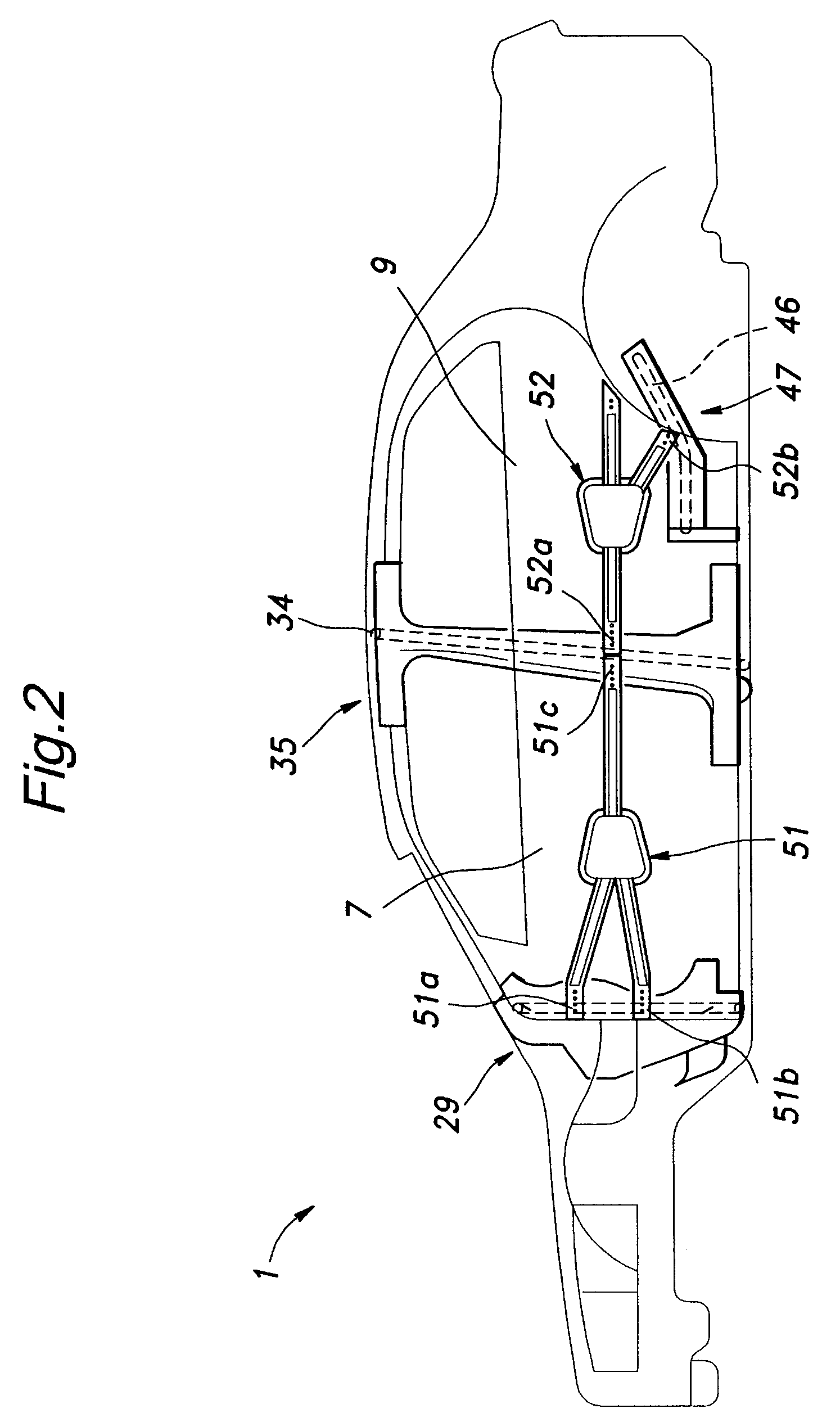Vehicle body structure reinforced against side impact
a technology for vehicle body structure and side impact, which is applied in the direction of roofs, doors, transportation and packaging, etc., can solve the problems of preventing effective absorption of impact energy, and reducing the overall body rigidity, so as to protect from excessive deformation and large area
- Summary
- Abstract
- Description
- Claims
- Application Information
AI Technical Summary
Benefits of technology
Problems solved by technology
Method used
Image
Examples
modified embodiment
[0040]FIG. 10 is a see-through perspective view of a modified embodiment of the present invention. This embodiment is similar to the previous embodiment except for that the first and third annular frames 29 and 47 are slightly different from those of the previous embodiment. More specifically, in the modified embodiment, the first annular frame 29 is not provided with a loop member, and is formed by joining the upper ends of the right and left front pillars 11 and 12 with a cross pipe 81 having a relatively large diameter. The third annular frame 47 is also not provided with a loop member, and is formed by the floor reinforcement frame 15 itself. In the modified embodiment also, the required mechanical strength and rigidity for the vehicle body 1 to withstand a predetermined side impact can be achieved by suitably selecting the thicknesses of the various members.
PUM
 Login to View More
Login to View More Abstract
Description
Claims
Application Information
 Login to View More
Login to View More - R&D
- Intellectual Property
- Life Sciences
- Materials
- Tech Scout
- Unparalleled Data Quality
- Higher Quality Content
- 60% Fewer Hallucinations
Browse by: Latest US Patents, China's latest patents, Technical Efficacy Thesaurus, Application Domain, Technology Topic, Popular Technical Reports.
© 2025 PatSnap. All rights reserved.Legal|Privacy policy|Modern Slavery Act Transparency Statement|Sitemap|About US| Contact US: help@patsnap.com



